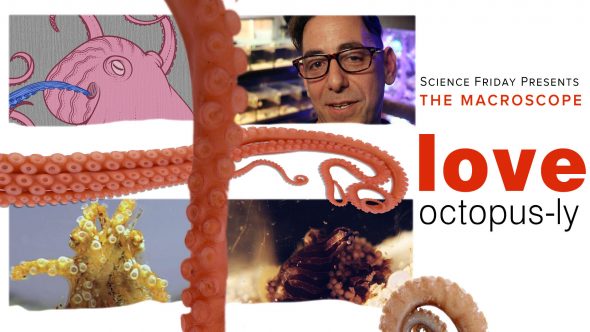Secret Home Lab on Adam Savage’s Tested
The Tested Crew came over to the SHL as part 3 in a 4 part series about building an octopus puzzle.
(Note: This is a video series we filmed in 2018, before the current pandemic lockdown.) While we wait for the California Academy of Science’s Giant Pacific Octopus to learn Adam’s puzzle, Kishore and Indre visit biologist and cephalopod expert Rich Ross’ home aquarium and lab where Rich breeds and raises octopuses and other amazing critters. It’s one of the most fascinating home laboratories we’ve visited!
Part 1: https://www.youtube.com/watch?v=jVoj6…
Part 2: https://www.youtube.com/watch?v=lIUIC…
Indre Viskontas: https://twitter.com/indrevis
Kishore Hari: https://twitter.com/sciencequiche
Adam Savage says nice things about Rich
Local copy here
I’m mentioned a few times, but the good chunk is at about 29:40, which is where the youtube video below should start. There is a bunch of ceph stuff earlier.
Coral are in serious trouble. This lab could help save them
From Wired by Matt Simon
CORALS ARE IN SERIOUS TROUBLE. THIS LAB COULD HELP SAVE THEM
(Local copy of the video available here)
Nestled among giant fish tanks at the California Academy of Sciences, there’s a black box—just big enough to hold six aquariums and maybe five humans. What it lacks in size, though, it makes up for in preciousness: Running here is a experiment that could help save corals from annihilation.
The corals in these tanks are reproducing sexually. Which is weird, because even out in the wild, coral spawning is a fragile process, easily disrupted by changes in temperature and acidity. Reproduction has to be precisely timed with the phases of the moon, and it occurs just once a year, as corals release great clouds of sperm and eggs that mix together, fertilize, and descend once more to the seafloor.
Corals are animals, not plants; each organism is made up of lots and lots of polyps. Some species can reproduce asexually, essentially producing clones of themselves. But not the ones in this black box, which are somehow spawning away thanks to some fancy technology and a team of doting humans.
Researchers have brought gravid corals back to the lab before, where they immediately got down to business. But the Academy of Sciences is on the verge of establishing a more permanent population that could reproduce year after year, allowing researchers to perform crucial long-term studies. That’d make this only the second lab to do so, after London’s Horniman Museum. If it works, these scientists could turn corals in model organisms, like fruit flies and mice. They’d have a reliable population to study in detail over multiple generations.
“We built this whole dark room, but that’s only the first part of it,” says Rich Ross, aquarium biologist at the Academy. “What really comes into play is controlling the light—the moonlight, the temperature, and the intensity of all that light. The coral spawn is triggered by all of those factors.” (more…)
Love, Octopus-ly – Science Friday covers the Secret Home Lab
From Science Friday
Full-time biologist—part-time cephalopod matchmaker, Richard Ross invites us into his secret home lab where he studies the mating rituals of the lesser Pacific striped Octopus.
Local copy:
https://vimeo.com/222450496
I’m a .gif!
https://vimeo.com/222453063
